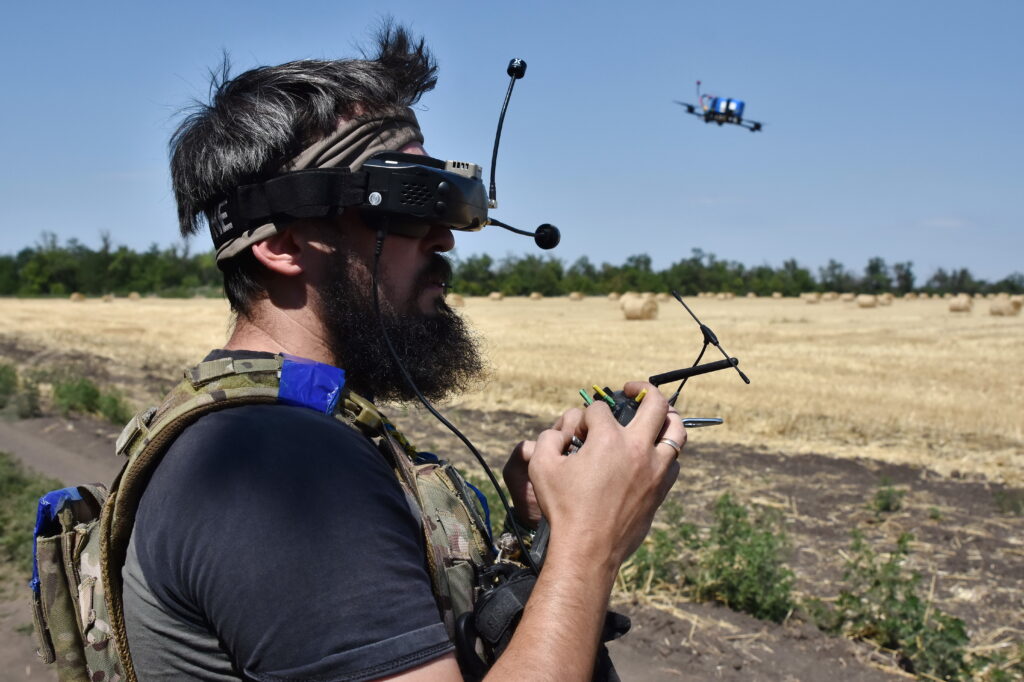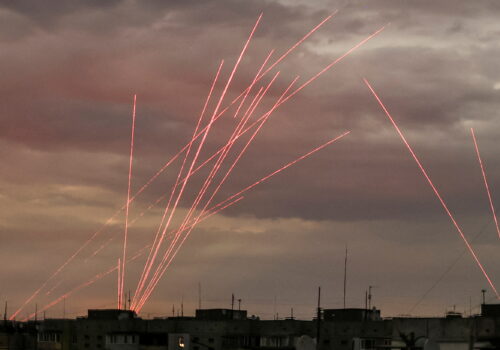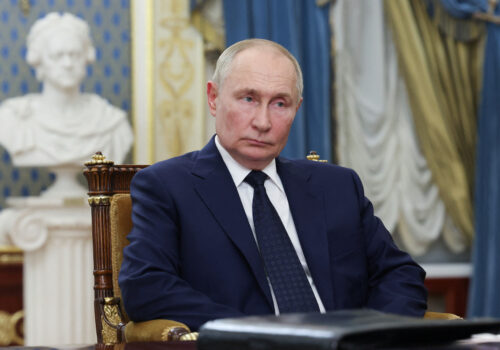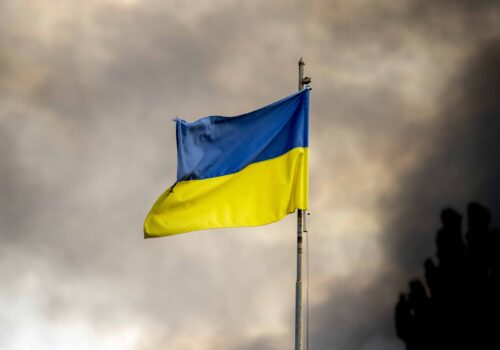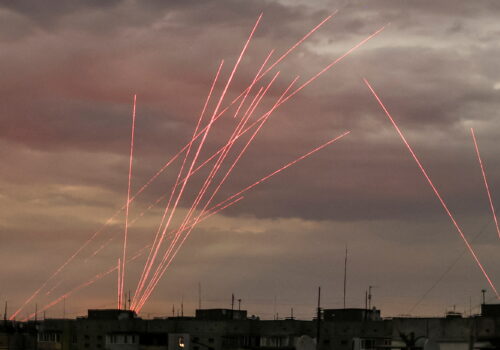
Ukraine’s innovative defense industry can play a key role in Western security
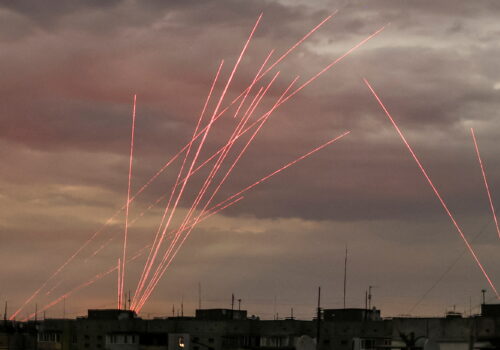
It is often said that armies always prepare to fight the previous war. This rings particularly true in relation to the Russian invasion of Ukraine. The sheer scale of the war unleashed by Vladimir Putin in February 2022 has exposed a lack of preparedness among the Western defense establishment, which has spent the past few decades focused on defeating lightly armed paramilitaries and terrorist networks.
The defense industries of Western countries have so far struggled to meet the challenges presented by Russia’s invasion, with output in core categories such as artillery shells still far below the needs of the Ukrainian military. At the same time, the war in Ukraine has provided military officials with unprecedented insights into the realities of full-scale warfare in the twenty-first century.
New military technologies are playing a key role in the Russian invasion of Ukraine, with a range of innovations rapidly transforming the battlefield. Ukraine has proved highly adept at this form of warfare. Ukraine’s success is in part due to the country’s vibrant tech sector, much of which quickly refocused on the needs of the defense industry following the start of Russia’s attack in early 2022.
Ukraine has made particularly striking progress in the field of drone warfare. Over the past two and a half years, hundreds of Ukrainian companies have begun producing drones, with state-led and private initiatives helping to streamline cooperation between individual companies, government agencies, and the military. This has paved the way for the development of battlefield strike drones, maritime drones, and long-range drones capable of hitting targets deep inside Russia.
Stay updated
As the world watches the Russian invasion of Ukraine unfold, UkraineAlert delivers the best Atlantic Council expert insight and analysis on Ukraine twice a week directly to your inbox.
Ukraine’s ability to stay one step ahead of Russia in the race for battlefield innovation offers valuable lessons for the country’s Western partners. It is therefore no surprise that defense companies and military planners throughout the West are already looking to learn from Ukraine’s experience as they prepare for the wars of the future.
Ukraine is also striving to establish itself as a leading defense industry player in its own right, drawing on its recently acquired know-how along the country’s past experience as a major contributor to the Soviet military-industrial complex. Ukrainian efforts are currently focused on a combination of public and private sector partnerships, together with integration into global supply chains and the defense programs of partner companies.
Recently, officials in Kyiv have begun encouraging allies to finance defense production in Ukraine. Supporters of this approach note that it saves time and is cost-effective, while also strengthening Ukraine economically and boosting the country’s long-term ability to defend itself. Ultimately, the goal is for the defense sector to become a major component of Ukraine’s postwar economy.
Eurasia Center events
Despite this broadly encouraging picture, many issues must be urgently addressed in order to make the most of Ukraine’s potential as a key defense tech partner for the West. These include imperfect intellectual property laws governing joint enterprises in Ukraine and in potential partner countries; excessive regulation of state-owned enterprises in Ukraine; and restrictions on defense companies in countries including the United States that create barriers to international cooperation.
In order to nurture the next generation of innovators and develop dual-use military technologies, Ukraine must ensure the right legal frameworks and operational mechanisms are in place. This is essential if the country hopes to attract manufacturers, engineers, and investors for joint research and development initiatives. Kyiv also needs to reform its export control systems and deepen cooperation with international partner agencies to counter industrial espionage.
Meanwhile, Ukraine’s Western allies should be looking to relax or remove a range of existing barriers to joint research and development projects. In order to respect specific political and security sensitivities, this process could initially be limited to certain categories or separately approved projects.
Supporting the development of Ukraine’s defense sector brings a range of potential benefits. Most immediately, it enables Ukraine to more effectively resist Russia’s ongoing invasion. Looking ahead, it can also serve as an engine for Ukraine’s economic recovery, thereby reducing the need for external funding from Western partners. By harnessing Ukraine’s unique battlefield experience and strong record of defense tech innovation, the West can gain crucial advantages amid the growing security threat posed by Russia and other authoritarian powers.
Ukrainian President Volodymyr Zelenskyy has said that Ukraine is building the arsenal of the free world. A number of individual Ukrainian defense companies have already demonstrated that they have much to offer and can compete internationally. In order to capitalize on this potential, Ukraine still needs to be fully embraced as an ally. This will require an imaginative understanding of the contribution the Ukrainian defense sector can make toward guaranteeing the security of the free world.
Pavlo Verkhniatskyi is the managing partner of COSA and co-chair of the Defense, Aerospace, and Security Working Group at the US-Ukraine Business Council. He is also a consortium member of the Ukraine Defense R&D Initiative, a contributor to the International Working Group on Russia Sanctions, and a member of the Public Council at the National Agency for Corruption Prevention of Ukraine.
Further reading
The views expressed in UkraineAlert are solely those of the authors and do not necessarily reflect the views of the Atlantic Council, its staff, or its supporters.

The Eurasia Center’s mission is to enhance transatlantic cooperation in promoting stability, democratic values and prosperity in Eurasia, from Eastern Europe and Turkey in the West to the Caucasus, Russia and Central Asia in the East.
Follow us on social media
and support our work
Image: Andriy Andriyenko / SOPA Images via Reuters Connect
